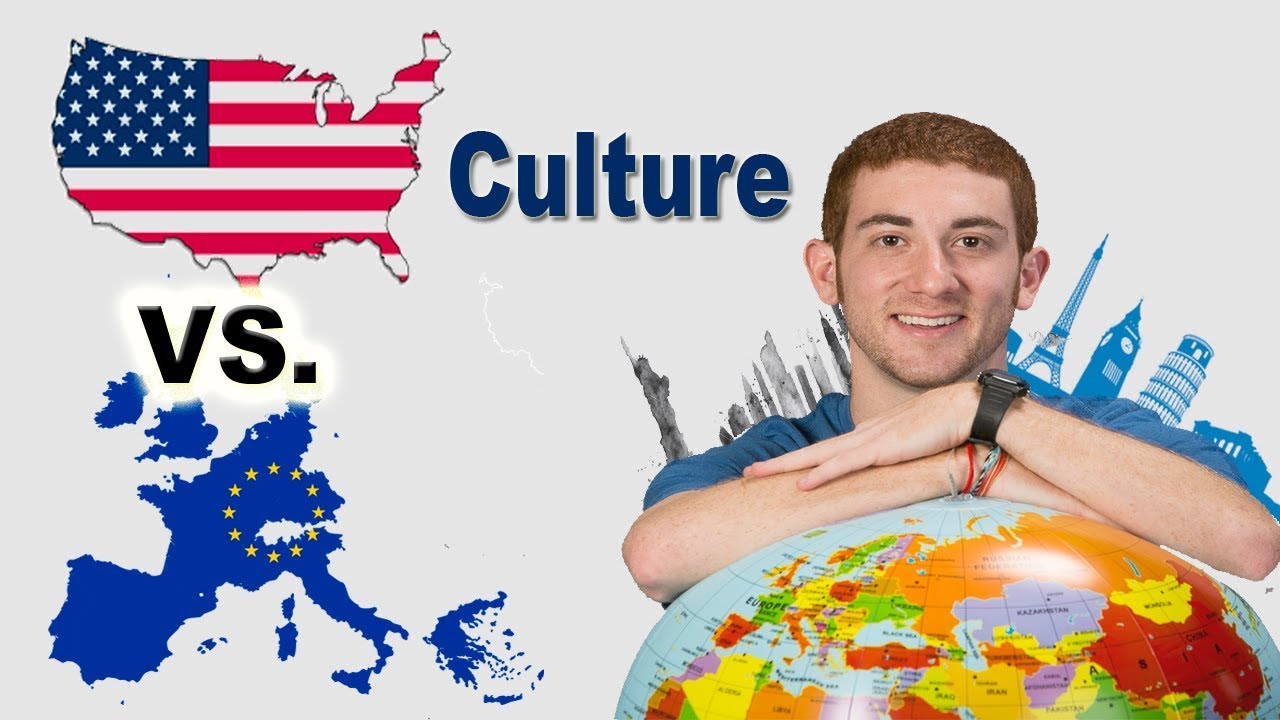18 Cultural Differences Between the USA and EUROPE

WHAT?! You have to pay to use public toilets, and to drink water in Europe?! And cigarettes are fashionable?
It’s about time someone addresses the cultural differences between the USA and Europe!
I just finished a 6 week Eurotrip — which means I’ve now spent more than 1 year of my life in Europe, and visited every single country on the continent (yes, all 45 countries!)
While many things are similar about American and European culture, there are plenty of little (and BIG) differences that I’d like to bring to your attention in this video!
How does the difference in greeting practices impact social interactions in Europe compared to the United States?
There are numerous differences that exist between the United States and Europe with regards to culture. While there are some similarities, there are also quite a few stark contrasts that can make the experience of living in these places quite different. Here are 18 cultural differences between the USA and EUROPE.
1. Punctuality: Europeans are generally more punctual than Americans when it comes to meetings and appointments.
2. Tipping: In the United States, tipping is a customary practice whereas in Europe, it is not as prevalent.
3. Greetings: Europeans tend to greet each other with kisses on the cheeks, while Americans tend to shake hands.
4. Personal Space: Americans tend to require more personal space than Europeans.
5. Education System: The education system in Europe is different from the one in the United States.
6. Food: There are differences in the food between these places, including the types of dishes served, flavors, and ingredients.
7. Healthcare: Healthcare systems in Europe often afford greater care to its citizens than in the United States.
8. Privacy: Personal privacy is highly valued in Europe and it may be seen as intrusive to pry into someone’s life.
9. Language: There are major differences in language across Europe, with each country having its own unique tongue, while English is the primary language spoken in the U.S.
10. Public Transportation: Europeans tend to rely more heavily on public transportation than Americans.
11. Fashion: Europeans tend to dress more formally than Americans, even in very casual settings.
12. Drinking Age: The legal drinking age in Europe is lower than in the United States.
13. Work-Life Balance: Europeans tend to prioritize work-life balance over work hours and career advancement in contrast to the American culture that tends to emphasize hard work.
14. Household Size: European families tend to be smaller than American families.
15. Sports: Sports in Europe and the United States differ in the types of games, rules, and popularity.
16. Attitudes towards authority: Europeans tend to be more accepting of authority and state intervention in social matters than Americans, who emphasize individual freedom.
17. Holidays: The holidays celebrated in Europe differ from those in America, in terms of dates, traditions, and meaning.
18. Music: There are music genres that are popular in Europe that are not common to the U.S.
In conclusion, the cultural differences and nuances between the United States and Europe are numerous and complex. While there may be some similarities, the differences in language, food, fashion, work-life balance, and attitudes towards authority, to mention a few, serve to highlight the unique qualities of each region. Understanding and embracing these differences can lead to a deeper appreciation of each other’s cultures.








Visit Canada – 10 Things That SHOCK Tourists about Canada
We Discovered the SECRET to VAN LIFE!
HOW TO TRAVEL ON A SUPER TIGHT BUDGET!!
Shanghai Travel Guide
Living Off Grid in a Yurt | Solar Panels with Batteries | Harvesting Rainwater Off Roof – Ep. 39